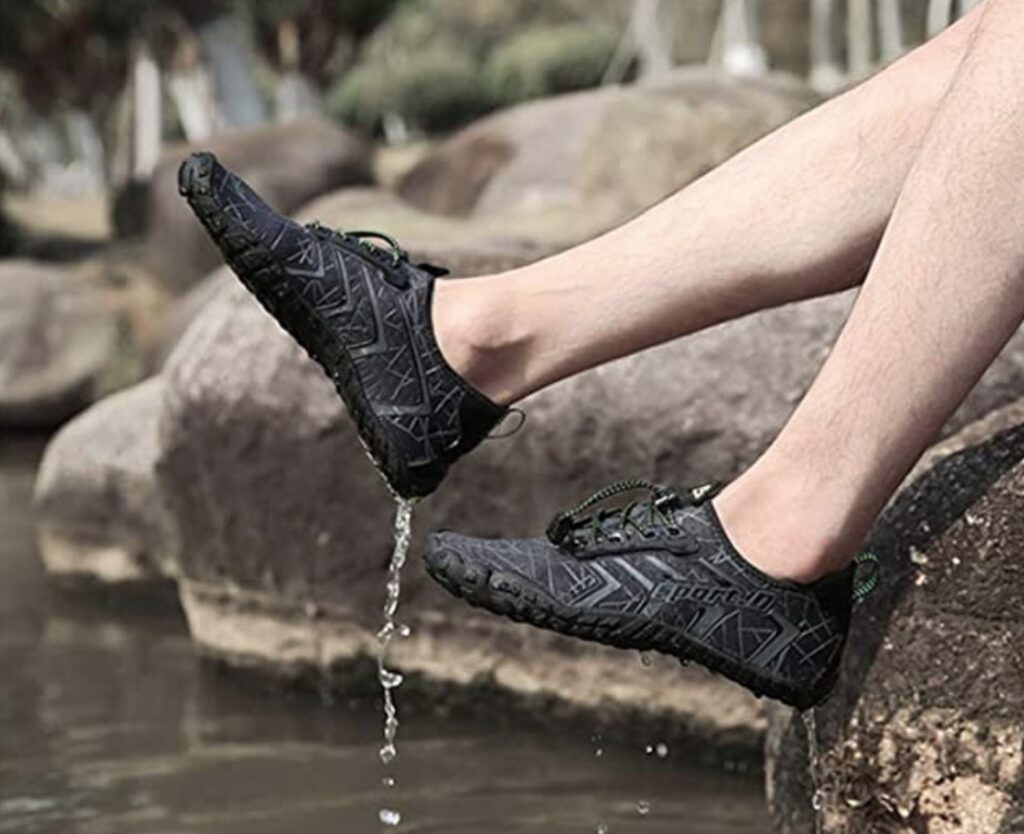What are Water Shoes? | How To Prepare Water Shoes?Do you find yourself ruining your sneakers in the water every time you go swimming? Are you looking for a more comfortable and practical option for all your aquatic activities? Water shoes are the perfect solution!
The purpose of these specialized shoes is to provide support, protection, and comfort for your feet at all times while immersed in or around water.
Table of Contents
Introduction:
Shoes designed for watersports provide protection and comfort in wet environments as well as provide traction for activities in and around the water.
Whether you’re swimming, kayaking, snorkeling, or walking on the beach, water shoes are the perfect footwear for a variety of activities.
What are Water Shoes?
Shoes designed specifically to protect you from the elements while taking part in activities involving water are known as water shoes.
The shoes are usually made of neoprene or synthetic materials and can be worn either with a slip-on style or with a lace-up style. Swimmers, kayakers, tubers, and other water sports participants should wear water shoes to ensure a secure fit and maximum protection.
What are water shoes used for?
A variety of activities can be performed with water shoes, including:
-
Swimming and beach activities:
Shoes designed for water can protect the feet when walking on rocky or coral-covered shorelines or when swimming to protect the feet from sharp objects.
-
Water sports:
Kayaking, stand-up paddleboarding, and white-water rafting can all be performed while wearing water shoes, which provide a high level of grip and protection to the feet.
-
Waterparks and water-based theme parks:
These kinds of recreational environments often have rough and slippery surfaces, which can be protected by wearing water shoes.
-
Hiking in wet conditions:
Water shoes can provide grip and protection to the feet while allowing them to dry quickly, making them a good choice for hiking in wet or muddy conditions.
It is beneficial to wear water shoes whenever you spend time in or around water, whether you are doing recreational activities or working. Footwear designed for wet conditions can provide comfort, protection, and support for the feet.
What are the different types of water shoes?
There are several types of water shoes available, each designed to meet the needs of a particular activity or feature. Water shoes can be classified into the following types:
-
Aquatic shoes:
Designed for general use in and around water, these water shoes are designed for general use in and around water. Swim, beachcombing, and light water sports can all be performed in simple, slip-on shoes.
-
Hiking water shoes:
The water shoes are designed to be worn both on land and in water. Their construction is typically more durable, and they may come with extra features such as a reinforced toe, a supportive footbed, and a lugged sole for improved traction. Hiking, backpacking, and kayaking are all activities suitable for these shoes.
-
Surfing water shoes:
They consist of a low-cut design and a flexible, non-slip sole. These shoes are designed to be used in the water and are ideal for activities such as surfing, bodyboarding, and bodysurfing.
-
Dive shoes:
It is a type of water shoe designed for divers to protect their feet from sharp objects on rough surfaces. Scuba diving shoes may have a full-foot design and thicker, more durable soles to protect the feet.
-
Water booties:
A pair of these shoes cover the foot and the lower leg, similar to a boot, and is normally made of neoprene material. They can be used for activities such as scuba diving, snorkeling, and stand-up paddleboarding.
How To Prepare Water Shoes?
The following tips will assist you in preparing water shoes for use:
-
Choose the right size:
A properly fitting pair of water shoes is essential to ensuring comfort and support. Measure your foot and consult the size chart provided by the manufacturer to find the right size.
-
Care for and maintain your water shoes:
It is important to properly care for water shoes so they last longer and perform better. After using them, rinse the shoes of any dirt and sand and let them dry completely before storing them. Do not expose them to extreme heat or sunlight, as these may cause the materials to break down and deteriorate.
-
Pack them properly for travel:
Packing water shoes efficiently can save you a lot of space in your suitcase. Consider putting them inside a larger bag or wrapping them in clothes to save space. If you are traveling by air, be sure to follow the airline’s requirements regarding carrying damp items.
FAQ
-
How should I choose the right water shoes for my activity?
A water shoe should be chosen based on the activities you will be performing in them. It is important to choose water shoes that are both durable and provide extra support, for example, if you will be walking or hiking a lot in wet conditions.
The shoes should be more flexible and lightweight if you plan to use them primarily for water sports. Select water shoes that are appropriate for your activity based on their features and materials as well as their fit and comfort.
Conclusion:
Shoes designed specifically for use in and around water are known as water shoes. These shoes are made from quick-drying materials and often feature a nonslip sole to ensure good traction on wet surfaces.
A variety of activities can be performed in water shoes, including swimming, beach activities, water sports, waterparks, and hiking in wet conditions.
Wet environments require footwear that provides protection, support, and comfort for the feet. A pair of water shoes can be an excellent addition to anyone’s equipment collection who spends significant time in or around the water.

